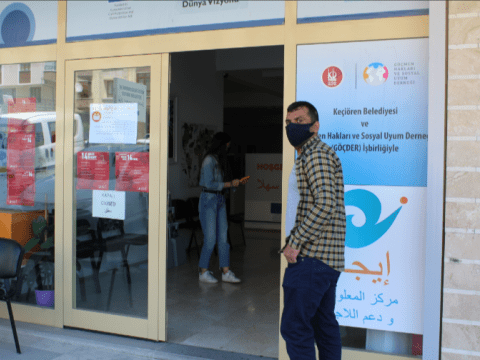Syria: a long drawn conflict

Written by George Mghames, Communications Specialist at World Vision Syria Response
The Syrian conflict was one of the worst crises the world has seen over the past decade, if not the worst. Yet, there are no signs of a near end for the conflict. Thirteen million Syrians are either refugees in neighbouring countries or internally displaced 1. They are not just numbers. They are people living in unsafe contexts and poor conditions. Can you imagine such a dramatic change impacting your own country, with more than a quarter of the population forced to leave, and most of the remaining citizens either internally displaced or living in dire conditions? Thousands of families went and are still going through difficult times since the beginning of the crisis – constantly on the move, children losing the hope of returning back home, and parents earning too little to support their children. There are many stories, but they all have one thing in common: they are about hardship and resilience.
Hamza, lucky to even be just alive
One day in 2014, during Ramadan, 50-year-old Hamza woke up in a hospital in a different country. “I did not know what happened, they explained what happened after I woke up in the hospital. I didn’t even know that I was no longer in Syria,” he says. One week before, Hamza’s home had been hit by a bomb, he was injured and lost conscience. An ambulance took him across the border into Turkey for treatment. “After a few days, my family followed me to Turkey where I first saw them in the hospital. I was discharged after five days and we then stayed as refugees in Turkey.”
Since then, Hamza and his family have been living in a difficult situation, barely able to make ends meet. “I used to work as a painter in Syria, but recently I was too sick to work and provide for my five children. To make matters worse, my daughter was diagnosed with a tumor in her head, but thankfully the doctors were able to remove it,” he says. “COVID-19 made things harder on us as a family, we were not always able to buy the needed hygiene items, and my children had difficulties with online learning, especially that our internet is not stable,” he adds.
A disaster that needs to end
Hamza is one of millions displaced Syrians, each with a unique painful journey taking place either in Syria or in host countries. A decade after the crisis began, these people are often forgotten and getting less and less attention, yet the more time they spend on the move or in the refugee camps, the more support they need. Most of them have depleted all their savings – if they even had any, to begin with. Children are traumatized by what they have experienced in Syria or what they are witnessing while they are displaced in a foreign place; most of them have poor access to quality education, which means millions will suffer from the consequences for decades to come.
Thanks to EU Humanitarian Aid funding, IGAM, with the support from World Vision, helped Hamza and his family apply for financial support. They started to receive monthly cash transfers to meet their basic needs thanks to the EU’s flagship cash programme called Emergency Social Safety Net (ESSN). “I was referred to IGAM through a close friend. They helped turn our situation for the better. The money helped me pay some bills and the rent. My children and I can also receive treatment now,” he says.
Hamza, along with most Syrian refugees and displaced people inside Syria, have lost hope in a better future inside their home country, and dream of a life elsewhere that offers security and stability. A fast resolution to the Syrian conflict is desperately needed, so the county can be built back by the people who lost a decade of their lives in search of safety.
1 https://www.worldvision.org/refugees-news-stories/syrian-refugee-crisis-facts#:~:text=BACK%20TO%20QUESTIONS-,How%20many%20Syrian%20refugees%20are%20there%3F,in%20Syria%20need%20humanitarian%20assistance.